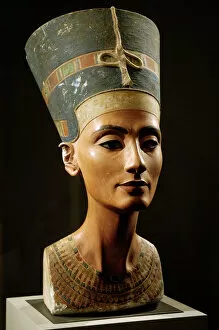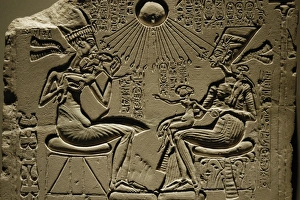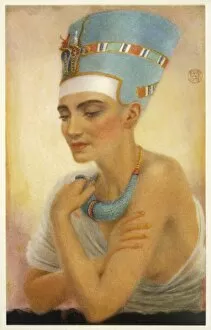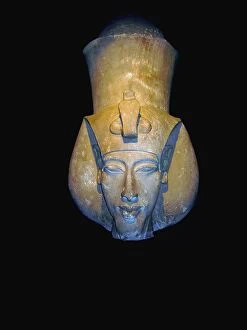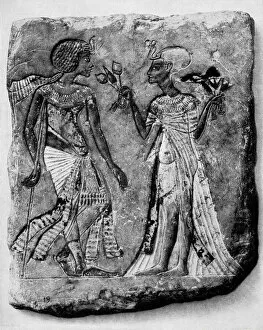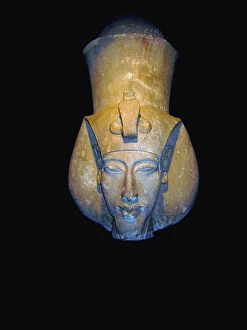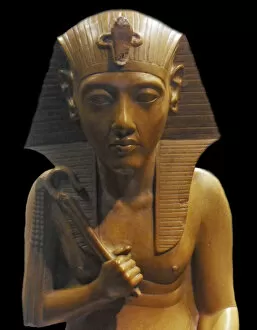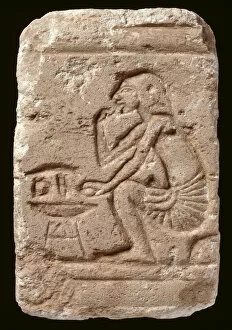Akhenaten Collection
Akhenaten, the enigmatic pharaoh of ancient Egypt, left an indelible mark on history through his radical religious and artistic reforms
All Professionally Made to Order for Quick Shipping
Akhenaten, the enigmatic pharaoh of ancient Egypt, left an indelible mark on history through his radical religious and artistic reforms. His reign in the 14th century BC brought about a revolution in Egyptian art, as seen in the iconic Nefertiti bust housed at Neues Museum. Carved from limestone and adorned with stucco, this masterpiece captures the timeless beauty of Queen Nefertiti. Her regal features and serene expression epitomize the elegance of ancient Egyptian art. Another captivating depiction is found in a relief that portrays Akhenaten alongside Nefertiti and their three daughters. This scene showcases their familial bond amidst a backdrop of intricate hieroglyphics. In "King Akhenaten and Queen Nefertiti making a Sacrifice, " we witness their devotion to Aten, the sun-god worshipped during Akhenaten's reign. The couple stands united, offering prayers under the benevolent rays of Aten. The talented artist Winifred Mabel Brunton also immortalized these figures through her paintings. In her portrayal of Nefertiti, she captures both her allure and power as one of Egypt's most influential queens. One cannot overlook "Akhenaten and His Family" from Tell el-Amarna (Akhetaten). This artwork provides insight into their private lives; it reveals not only Akhenaten's role as a father but also highlights Meritaton, his eldest daughter who played an important political role during his reign. A striking statue dedicated to Akhenaten further emphasizes his distinctive physical features – elongated face, narrow eyes, full lips – characteristics that set him apart from traditional representations of pharaohs. Lastly, there is a remarkable relief depicting Akhenaten and Nefertiti basking under the divine radiance bestowed upon them by Aten.

